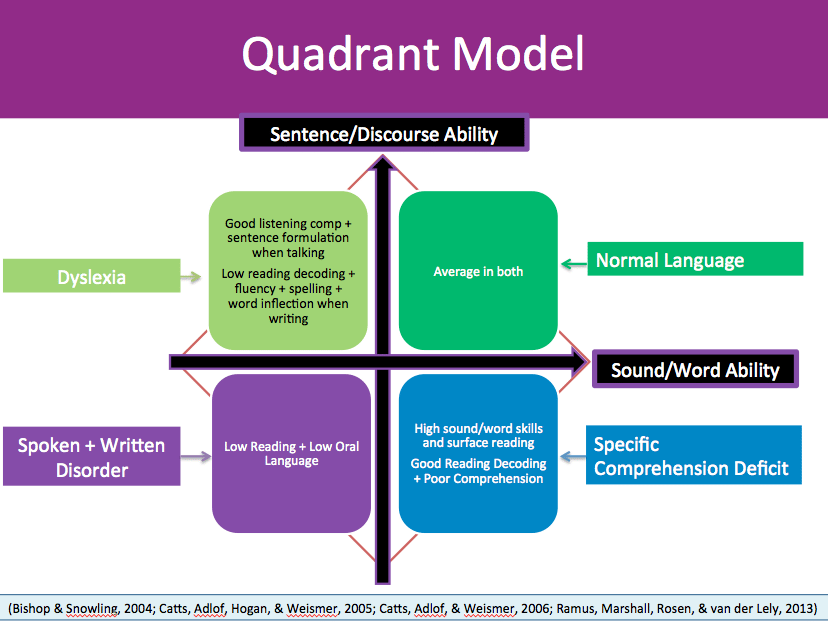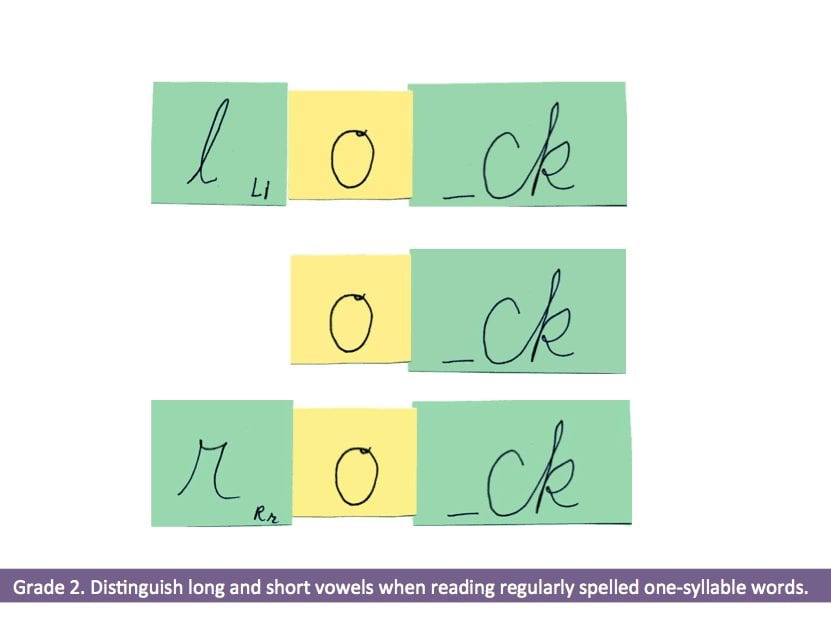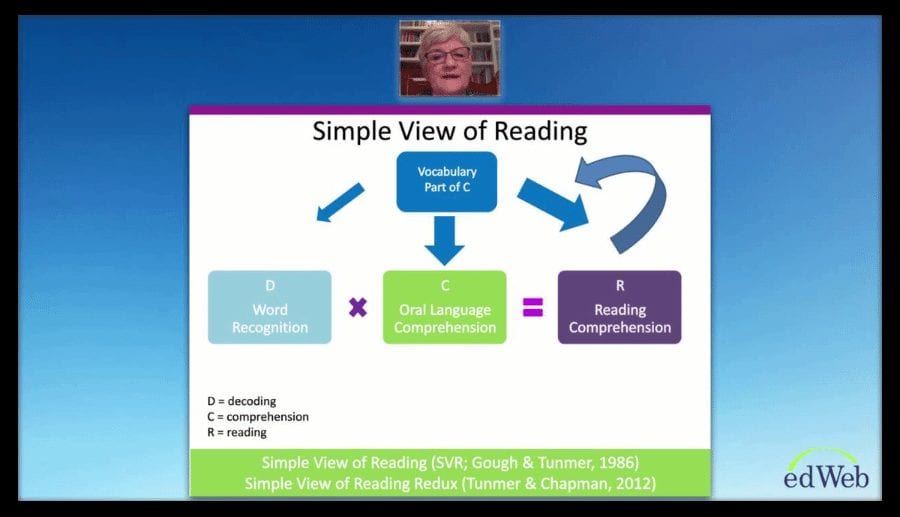Teaching Students with Literacy Problems—Including Dyslexia

Not all reading problems are alike. Educators must first determine the student’s problem before determining how to help. Dr. Nelson suggests using the four key profiles of the quadrant model to screen for literacy difficulties. The quadrant model displays levels of sound/word ability and sentence/discourse ability to determine skill level. For example, a student with dyslexia would be strong in sentence/discourse ability, but weaker in sound/word level ability, so when teaching these students educators should focus on the structure of words.
Dr. Nelson noted that while many students with dyslexia are good students and score well on tests, many still need an Individualized Education Program (IEP) and explicit instruction. Some states have introduced dyslexia legislation to offer appropriate instruction for struggling dyslexic students. To identify dyslexia and other literacy disorders in students, parents and teachers can fill out the Student Language Scale (SLS) from the Test of Integrated Language & Literacy Skills (TILLS
To help teach word structure knowledge, Dr. Nelson recommends educators embed explicit instruction into grade level curricula to develop all students’ reading decoding, spelling, and vocabulary skills. “My encouragement to teachers is to play, teach your kids to focus on the fun of making rhymes with words,” said Dr. Nelson. She noted that this can work with both younger and older grades. Also, sound-symbol association skills can be built by using a multi-modal, multi-sensory, multi-linguistic approach to make association automatic. This kind of explicit instruction is especially effective for students with dyslexia.
Dr. Nelson emphasized using writing instruction as a great way to get classroom teachers and special service providers working in the same space. They can work together, using regular curricular assignments as context for students who are struggling. Educators can merge teaching of writing processes with language processes through planning and organizing ideas, drafting, revising, proofreading and editing, and presenting and celebrating their work. Dr. Nelson shared many valuable tips for throughout the edWebinar, which can be viewed at the link below.
This broadcast was hosted by edWeb.net and sponsored by Brookes Publishing.
This article was modified and published by eSchool News.
About the Presenter
Nickola Wolf Nelson, Ph.D., CCC-SLP, BCS-CL, is Professor Emerita in the Department of Speech, Language, and Hearing Sciences and former Director of the Ph.D. program in Interdisciplinary Health Sciences at Western Michigan University. She is the author of the book Language and Literacy Disorders: Infancy Through Adolescence, and first author of Test of Integrated Language and Literacy Skills (TILLS), as well as editor-in-chief of the journal, Topics in Language Disorders. Dr. Nelson’s research and publications focus on curriculum-based language and literacy assessment and intervention.
Join the Community
Teaching All Students: Practical Strategies for Inclusive Classrooms is a free professional learning community that provides a space for school professionals to discover and share practical strategies for inclusive classrooms.
About the Sponsor





Comments are closed.